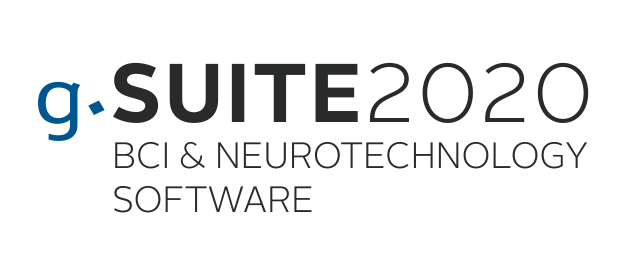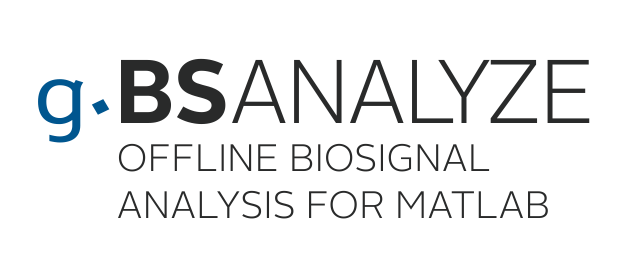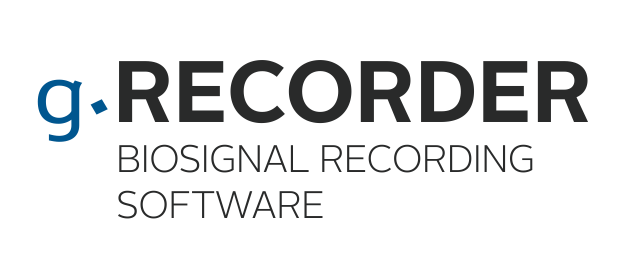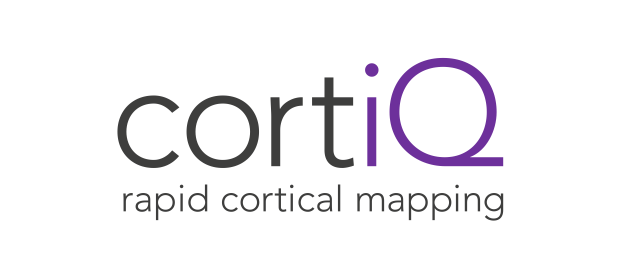
- Product Pages
- g.tec SUITE 2020
The g.tec Suite 2020 contains the software library to run data-acquisition and real-time processing experiments with g.USBamp, g.HIamp and g.Nautilus. It consists of the packages g.HIsys, g.Recorder, g.NEEDaccess and g.BSanalyze. Furthermore, it allows to control the g.Estim FES, g.Estim PRO with the switching unit and g.CUBE.
From now on, software upgrades e.g. from g.Recorder BASIC to g.Recorder PROFESSIONAL are made simple. The g.tec Suite 2020 is combining all functions to create sophisticated neuroscience experiments quickly.
Furthermore, it includes a Montage Creator to plan EEG, ECoG and g.Pangolin recordings.
| Rapid prototyping environment (including g.NEEDACCESS, MATLAB API, Python API, C API) |
| g.tec Suite 2020 can be upgraded with g.Recorder, g.BSanalyze, g.HIsys |
| Works with all g.tec biosignal amplifiers and stimulators |
| Works with all g.tec stimulators and switching unit |
| New software update feature (Notifications) |
| New hardware & software compatibility check |
| Software licenses |
| Montage Creator with 2D and 3D visualization including MR and CT images |
| g.BSanalyze |
| g.HIsys Basic |
| g.HIsys Professional |
| g.Recorder Basic |
| g.Recorder Basic |
| g.Recorder Professional |
| g.NEEDaccess MATLAB API |
| g.NEEDaccess Client API |
| g.NEEDaccess C API |
| g.NEEDaccess .NET API |
| g.NEEDaccess MATLAB |
| g.NEEDaccess Network |
| g.NEEDaccess Python |
| Montage Creator |
| g.Pangolin Montage Creator |
| iEEG Montage Creator |
Get full control over your hardware & software!
The rapid prototyping environment integrates seamlessly all modules from biosignal data acquisition, real-time processing, offline analysis to close-loop experiments with electrical and magnetic stimulation in one single environment.
It comes with the g.NEEDaccess server that provides you access to g.HIamp, g.USBamp and g.Nautilus and includes C/.NET, MATLAB and Python APIs to develop your own applications. The g.NEEDaccess server transfers the data to g.Recorder and g.HIsys.
The g.tec Suite 2020 can be upgraded with g.Recorder, g.HIsys and g.BSanalyze.
g.NEEDaccess is a server that facilitates simple and platform independent data acquisition from (multiple) devices over a network or direct connection, which considerably reduces workload. g.NEEDaccess allows you to acquire data easily from g.tec devices without having to take care of low-level aspects of data acquisition. The server handles acquisition and preprocessing of data such that the user receives data ready to analyze. Since data acquisition is also realized over the network, it is now possible to collect the acquired data on a different computer than the one connected to the g.tec device (if both are connected to the network).
Moreover, the server is able to provide data from a single acquisition simultaneously for multiple clients. Thus, multiple users across different systems can simultaneously review data in real-time.
The toolbox is a device driver that lets users read biosignal data like EEG, ECoG, EMG, EOG and ECG within the MATLAB environment. MATLAB is a very flexible development environment, which allows you to easily set up your own signal acquisition and analysis by utilizing all available toolboxes from MATLAB (like Statistics, Neural Networks, and Signal Processing).
One of the key advantages of the API for MATLAB is that it is fully integrated into MATLAB. Therefore, you can start data acquisitions within minutes, and build your application easily and quickly. The API for MATLAB contains commands that provide full access to the amplifier. There are commands for reading the data, setting the bandpass and Notch filters, changing the sampling frequency of the amplifier, defining bipolar derivations and calibrating the system.
The Application Programming Interface (API) allows you to access the amplifier from many programming environments. The API has functions to fully control the amplifier from C, C++, Visual Basic, LabView and many more programming languages. The API is available for Windows operating systems.
It enables you to program your own sophisticated biosignal acquisition and data processing applications. Sample programs and the well documented source code in the electronic manual serve as a template for your programs. The device driver package contains demo programs that show you the usage of all functions and help to get started with the API.
This is the innovative g.tec Suite software designed to streamline research interfaces, data analysis and processing. The g.tec Suite contains the software library to run data-acquisition and real-time processing experiments with g.USBamp, g.HIamp and g.Nautilus. It consists of the packages g.HIsys, g.Recorder, g.NEEDaccess and g.BSanalyze.
The iEEG Montage Creator allows to define intracranial electrode positions on 2D images or 3D brains for visualization in g.BSanalyze and g.HIsys. The software uses a pre-defined database of certified electrode grids from different manufacturers.
In the Montage Creator, electrode grids can be placed on schematic images, photographs of the craniotomy, or, in 3D mode, on the MNI 152 template or on the reconstructed patient’s brain. Moreover, the software can be used to extract 3D electrode locations from CT imaging.
Use the g.PANGOLIN Montage Creator to plan your 64-, 128-, 256-, 1 024 channel ultra-high density recording with precise positions. Check the video to see how the grids can be interactively placed and attached to the head. The iEEG Montage Creator allows you to place ECoG electrode grids directly on the brain surface. This information is used in g.HIsys Professional and g.BSanalyze to topographically map the brain activity.
The iEEG Montage Creator allows you to co-register a post-operative CT and a pre-operative anatomical MRI in order to extract electrode locations for visualization with a 3D model of the cortex.
The iEEG Montage Creator allows you to segment implanted electrodes from a post-operative CT and automatically detect the ECoG electrode locations.
The new sEEG functionality is now available in the iEEG Montage Creator of the g.tec Suite 2020. The video shows how depth electrodes are inserted into the thalamus for high-gamma mapping with cortiQ and neuromodulation experiments. This can be useful for many different medical and scientific applications, for example for patients who suffer from Parkinson’s disease, STN in the thalamus is used for electrical stimulation in order to reduce tremor.

3.570 €
80% discount with g.HIamp, g.USBamp, g.Nautilus

7.200 €
50% discount with g.HIamp, g.USBamp or g.Nautilus

BASIC 1.150 €
5% discount with g.HIamp, g.Nautilus or g.USBamp

PROFESSIONAL 5.990 €
10% discount with g.HIamp, g.Nautilus or g.USBamp

BASIC 1.150 €
Basic bundle, 5% discount with g.HIamp, g.Nautilus or g.USBamp

PROFESSIONAL 3.570 €
10% discount with g.HIamp, g.Nautilus or g.USBamp

8.349 €
Buy with g.HIamp, g.USBamp or g.Nautilus

Send us your email so we can contact you as soon as possible.